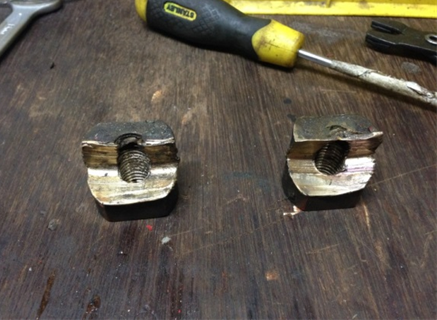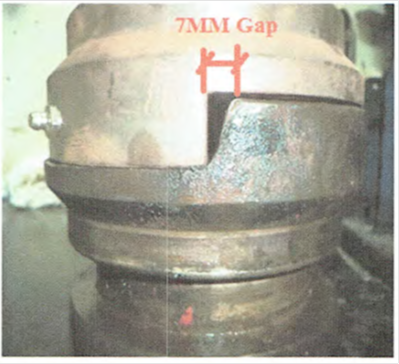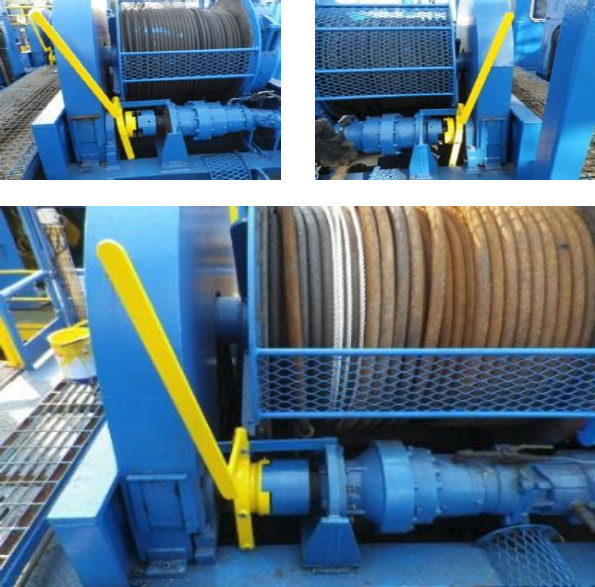- Discover how we are helping Members reduce emissions: Explore the ProjectGHG hub now.
- Join the global DP Community at the IMCA DP Conference in Amsterdam. 21 and 22 May. Book now
- Register your interest for the IMCA Global Summit 2024. 3-4 December, Utrecht, Netherlands.
- Now booking. Underwater Ship Husbandry Seminar. 10 October 2024, Singapore.
Failure of bell winch clutch coupling during bell recovery
A member has reported an incident in which a winch clutch failed during bell recovery. A diving support work barge was performing riser installation in saturation mode. The saturation dive system was third party hired equipment with technicians provided by the supplier. The system model is of a type the diving contractor also owns and operates.
During recovery with three quarters of the bell submerged the clutch between the winch and the hydraulic motor disengaged causing an in water descent of the bell to 10 msw. There were no injuries to bell occupants or topside support personnel.
The secondary motor and clutch assembly was engaged and the bell was recovered to surface, locked-on and transfer under pressure (TUP) without further incident. The faulty equipment was replaced and a load test was carried out to 14.88Te
Subsequently two further dry bell runs were carried out on each motor during which the bell was lowered to below surface and lifted back to hooks.
What went wrong?
Excessive wear of the clutch components and their retaining device provided enough ‘slop’ in the assembly to allow space for separation of the coupling. The winch brake did not engage and prevent the free fall as the fail safe hoist lever was not immediately released upon descent (both the internal disc and external band brakes engage only when the lever is in the neutral position).



Our member’s investigation revealed the following:
The leading edge of the clutch on the load bearing side pushed the pinion coupling outwards causing wear of both the bronze bushing and the engaging edge of the clutch cog, providing a gap which eventually allowed unintentional disengagement of clutch.
It was learned that a similar loss of control incident involving identical wear of the same components on that system had occurred several years previously.
Of the many system ‘General Safety Recommendations’, and ‘Operating Procedures’ listed in the supplier/manufacturer’s manuals are the following:
- Read all warning tag information and become familiar with all controls before operating the winch;
- Slowly hoist or lower (main bell winch). The gearbox brake will automatically release and the hand brake automatically opens;
- Inspect rigging, drive and hydraulic hoses at the beginning of each work shift. Defects should be corrected immediately;
- Check all hinges, clevises and grease points.
Our member noted the following causes:
- Worn/damaged components led to an unintended disengagement of the clutch;
- The location/position of the components involved does not lend immediately to direct observation;
- An inadequate inspection regime: information regarding the correct operation and maintenance was available from the manufacturer however, the planned maintenance system (PMS) used was of a general type and had omissions of critical component care;
- Failure to follow up on recommendations resulting from the initial incident.
Our member took the following immediate actions:
- Repaired and made function test of the equipment;
- Forwarded advice to the system supplier and held meetings soon after;
- Reviewed system maintenance and operating procedures;
- Sent pre-investigation internal notification to worksites, requiring inspection of like components where installed;
- Formal investigation initiated.
The following preventative actionsare being taken:
- Clean and apply fresh paint of bright, unlike colours to the two opposing jaws of such couplings to highlight any developing increase in spacing and increase visibility/retain awareness of the critical components. Currently, the modification has been implemented on the bell winch system on one of the saturation diving systems. The method is not limited to this particular equipment and should be considered for application wherever safety critical components are installed, especially if they have a history of a previous incident;

Colours – before 
Colours – after - Measurements of the coupling jaws to be taken over time and logged in order to monitor wear and tear on this and similar devices;
- Once every two weeks, alternate the primary and secondary clutch and motor in order to reduce wear and tear and monitor the system;
- Increase the thoroughness of inspections for third party equipment with the use of company saturation system function test protocol, updated to include the particulars of the components involved in this incident;
- Revision of company maintenance schedules for inclusion of a segment on critical components and with closer attention to specifics. Note: grease nipples are not applicable to this area. ‘Open gear lubricant’ is the requirement (at the bushing interface).
Members may wish to refer to the following similar incidents (key words: clutch, brake, failure):
Safety Event
Published: 25 November 2014
Download: IMCA SF 18/14
IMCA Safety Flashes
Submit a Report
IMCA Safety Flashes summarise key safety matters and incidents, allowing lessons to be more easily learnt for the benefit of all. The effectiveness of the IMCA Safety Flash system depends on Members sharing information and so avoiding repeat incidents. Please consider adding [email protected] to your internal distribution list for safety alerts or manually submitting information on incidents you consider may be relevant. All information is anonymised or sanitised, as appropriate.
IMCA’s store terms and conditions (https://www.imca-int.com/legal-notices/terms/) apply to all downloads from IMCA’s website, including this document.
IMCA makes every effort to ensure the accuracy and reliability of the data contained in the documents it publishes, but IMCA shall not be liable for any guidance and/or recommendation and/or statement herein contained. The information contained in this document does not fulfil or replace any individual’s or Member's legal, regulatory or other duties or obligations in respect of their operations. Individuals and Members remain solely responsible for the safe, lawful and proper conduct of their operations.
